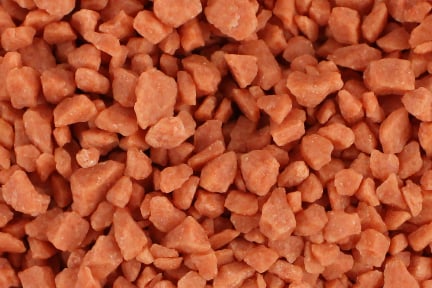A potash processing facility includes many pieces of equipment that are not only a big financial investment, but also critical to daily operation. In order to protect investments, prevent costly downtime, and extend the life of equipment, regular potash equipment maintenance is a necessity.
Potash Equipment Preparation
The key to maintaining a quality potash processing operation is to utilize equipment that has been prepared to handle the unique material characteristics of potash. For example, FEECO utilizes corrosion and rust resistant techniques to make the potash processing equipment more resilient to the corrosive effects of potash.
For Corrosion Resistance and Rust Prevention
Potash is a corrosive material that has the ability to destroy metal through chemical action. In order to prevent corrosion, equipment may be customized with stainless steel or nickel alloys in areas affected by potash during processing. In addition, equipment may be covered with UHMW (Ultra High Molecular Weight Polyethylene) to further prevent contact between potash and the metal of the equipment. The composition of potash essentially includes salt. Consequently, water used during processing creates an opportunity for equipment to rust. In order to prevent rust, equipment should be fully seal welded. This prevents material from entering any nooks or gaps within the machinery.
Potash Processing Maintenance
The most important aspect of potash processing maintenance is to minimize material build-up. Material should be moved through equipment as needed and should not ‘sit’ in equipment for unnecessary periods of time. This is especially important if extended periods of down-time are expected.
Potash Equipment Maintenance
Another way to support potash processing maintenance is through routine upkeep and standard inspections of equipment. Basic pieces of equipment common to a potash processing operation include compactors, rotary dryers (also referred to as potash dryers), bucket elevators, and conveyor belts. Potash processing maintenance is critical for these machines, because they are used regularly and process a large quantity of material. The performance of this equipment is contingent on regular maintenance performed properly at designated intervals. In addition to the tips listed above, the following lists highlight the preventative maintenance program for key potash processing equipment:
Bucket Elevator Maintenance
- The two head bearings and the two boot take-up bearings should be lubricated regularly. Each of these four lubrication points should be serviced at least once a week.
- The drive motor, speed reducer and couplings, and chain and sprocket drive should also be inspected and maintained per manufacturer’s recommendations.
- Periodic inspections should be conducted on the following components: drive system chains; the elevator’s vertical position; the head and boot pulleys (to ensure the belt is centered); electrical wiring and its associated contacts and switches; and nuts and bolts (to ensure they are properly tightened).
- It is especially important to clean out the boot after each use if the elevator is used seasonally to handle potash. The equipment should be operated for a short period of time every two weeks to ensure belt flexibility is maintained.
Conveyor Belt Maintenance
- Material build-up will accelerate wear on all components, especially when the equipment handles a corrosive material such as potash. Ensure that the conveyor is properly cleaned regularly.
- Periodic inspections should be conducted on the following: scraper mechanisms; belt tracking; idler wear; roll freeze; extended grease fittings; and the drive sprocket and chain.
- Lubricate the following components as directed by manufacturer recommendations: bearings, idlers, motor, speed reducer, and drive chain.
Potash Dryer Maintenance
- Regular cleaning should be performed to ensure material build-up is prevented.
- Periodic inspections should be conducted on the following: bearings, drive chains, couplings, hammers, motor, reducer, trunnion wheel/tire contact pattern, v-belts, burner system, internal devices, thrust assemblies, girth (bull) and pinion gears, and floating tire assemblies. In addition, the following contacts should be visually inspected: breeching seals; thrust rollers to tire; and trunnion wheels to tires.
- Lubricate the following components as directed by manufacturer recommendations: bearings, drive couplings, drive motor, thrust assemblies, floating tire assemblies, trunnion wheel bearings, and trunnion wheels and tires.
Note: This is not a complete maintenance list. Always consult your original equipment manual for more details and to ensure all necessary maintenance is followed. Maintenance should always be performed by a trained professional.
Following a regularly scheduled maintenance program will reduce the opportunity for downtime, as well as help to increase the life of a machine. Even better, customizing equipment to handle unique material characteristics will ensure process interruptions and their subsequent lost income are reduced. For more information on custom potash equipment, potash processing maintenance, or potash equipment maintenance, contact FEECO today!


